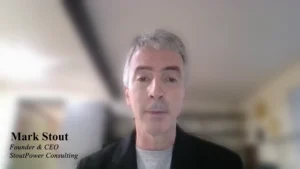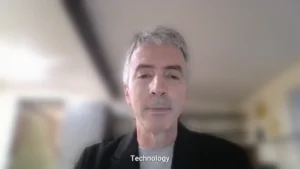Exploring AT&T’s Commitment to Renewable and More Efficient Energy Use
“Since 2010, we’ve completed over 100,000 energy efficiency projects.”
How are key stakeholders driving change in energy? Many are forging a path to renewable energy, carbon neutrality, and leveraging data and technology to be more energy efficient. Discussing AT&T’s journey, Energy Exchange host David Hidinger spoke with the company’s Director of Global Environmental Sustainability, Shannon Carroll.
Carroll has been with the company for over 22 years, and in the last 10, he’s focused on sustainability. “Our commitment to this is companywide, from the mitigation side to reduce emissions, investment in renewable energy, and being more efficient with the energy we do use.”
On the renewable energy bucket, AT&T works as an investor to developers, guaranteeing that they will buy energy produced. “Last year, we had the largest solar deal to date, where we purchased 500 megawatts,” Carroll said.
Since 2018, the company contracted to purchase over 1.5 gigawatts of renewable energy, which Carroll noted: “reduces greenhouse gas emissions, provides developers financial security, and boosts the local economy with clean energy job creation.”
AT&T also focuses on using energy more efficiently, and since 2010 has created over 100,000 energy-efficient projects. What’s unique is that they go beyond the best practices, leveraging data to make smarter decisions. “We are to the next level of predictive analytics and optimization, through IoT integration. We work with the data office to find opportunities.”
Their data process matured beyond streams of data, with sensors working in conjunction to drive meaningful insights. “What we see for the future is more real-time data analysis and knowing in the moment how decisions will save on costs and usage,” Carroll shared.









